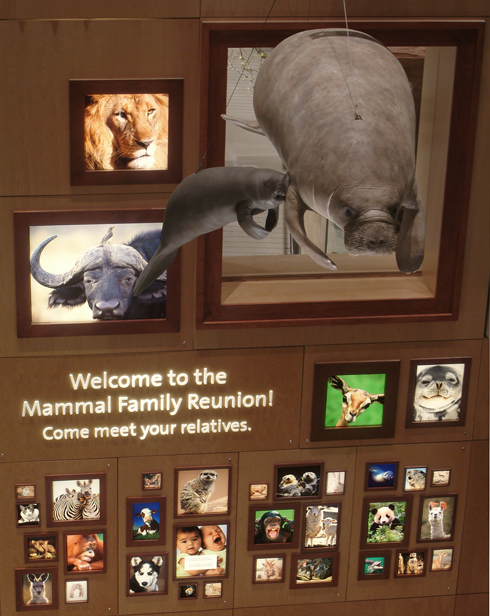(cross-posted from The Clutter Museum)
There’s been a ton of talk over the past year about how participating in social media—whether through blogging, social bookmarking, Twitter, Flickr, or whatever—can be a form of curatorial practice.
And I totally get the appeal of that particular metaphor. In fact, I understand that some people mean to use it in a very literal way, in the sense that they see themselves as imposing a welcome order or useful narrative on a very unwieldy collection of internet artifacts. I’ve seen some people I think are absolutely brilliant using the term this way.
Those who know me well know I don’t roll out my Ph.D. lightly. But as an (OK, adjunct) professor of museum studies and soon-to-be assistant professor of public history, I have to call bullshit on this one. As a lover of metaphor and as a poet who embraces all the possibilities of metaphor, I completely expect commenters to tell me to loosen up in this case. In fact, I suspect I’ll come across as a snob. But really, this distinction—what is curating, what very much isn’t—matters tremendously.
Educators with some facility in social media have become particularly fond of the term. But education isn’t curating. Curating isn’t education. In fact, in many museums, curators and educators are, alas, at odds with one another. Traditionally, curators have developed a depth of expertise in a content area over years of study, while educators tend—and yes, I know I’m generalizing here—to be younger folks with less education and experience. Education positions have a ton of turnover, a ton of burnout; curatorial positions come with more prestige and a sense of ownership of a position, sort of like tenure. Curators have at least a master’s degree and frequently a Ph.D. Educators have undergraduate degrees and increasingly, in this era of incredible competition for jobs, master’s degrees.
I don’t mean to imply that curators are above the fray, that they hold themselves at arm’s length from education. But their function is different. Curation is not a process of choosing the best resources to help other people learn. It’s much, much more, and to suggest that social bookmarking, sharing links via Twitter, or using an internet platform’s algorithm to help you determine which songs belong on your internet radio station is curation is ridiculous. Differentiating among things you like and dislike, or resources that you think are good or bad, and then sharing those opinions with people as a collection of internet or educational resources, is not curation.
When people talk about “curating” via social media, they’re really talking about filtering, and curators do so much more than filter. You can’t, I’m afraid to inform Robert Scoble, just “click to curate.” In fact, the absence of talented curators makes a given educational context degenerate, in newcurator’s most excellent formulation, to reality television.
Educators also do more than filter. They translate the curator’s research and expertise into small bites digestible by the general public or schoolchildren. This is a talent unto itself, and—as a former museum educator and exhibition developer—it’s not easy to develop because informal education diverges so spectacularly from what we’re all taught is supposed to happen in formal educational settings.
The conflation of a combination of sharing, digital resource connoisseurship, and online teaching and learning with a form of curation not only devalues the actual practice of curation—and by extension the time, effort, and passion it takes to develop sufficient expertise to become a curator—but also obscures the skills we hone as we navigate sharing on the social web.
We need a new term for folks who are developing (or who have already developed) the depth of expertise that marks curatorial work, but who also practice the distinctive forms of teaching and learning engendered by the social web. It’s not exactly edupunk, and it’s not museopunk.
In my mind, the people—and particularly academics—who occupy this space practice Keats’s “negative capability”: they are “capable of being in uncertainties, Mysteries, doubts without any irritable reaching after fact & reason.” By this I mean they get the tension—apparent to anyone who has planned a college course or an exhibition—between helping students or visitors develop content expertise and giving them opportunities to think critically and creatively. Doing both of these things simultaneously—cultivating expertise and promoting real intellectual development and discernment—is incredibly difficult to do from a lectern. The social web, like a provocatively interactive museum exhibition, offers new possibilities for this kind of participation in, and service to, the world.
 California Academy of Sciences botanical curator Alice Eastwood standing on the scarp of the San Andreas Fault, 1906. Eastwood was both a curator and an educator.
California Academy of Sciences botanical curator Alice Eastwood standing on the scarp of the San Andreas Fault, 1906. Eastwood was both a curator and an educator.What we call that exciting—and dare I say disruptive?— role is open to discussion and debate. Kindly leave your witty neologisms in the comments.
Update: Just saw this article on the new curators in the New York Times, which in some ways undermines my argument and in other ways reinforces that curating is its own special skill set. An excerpt:
It is also a group plugged in to all areas of museum life. They don’t simply organize exhibitions, they also have a hand in fund-raising and public relations, catalog production and installation. “The old-fashioned notion of a curator was that of a connoisseur who made discoveries and attributions,” said Scott Rothkopf, 33, who is the latest full-time curator to join the Whitney Museum of American Art’s team. “A lot of that work has already been done. The younger generation is trained to think differently, to think more about ideas.”

